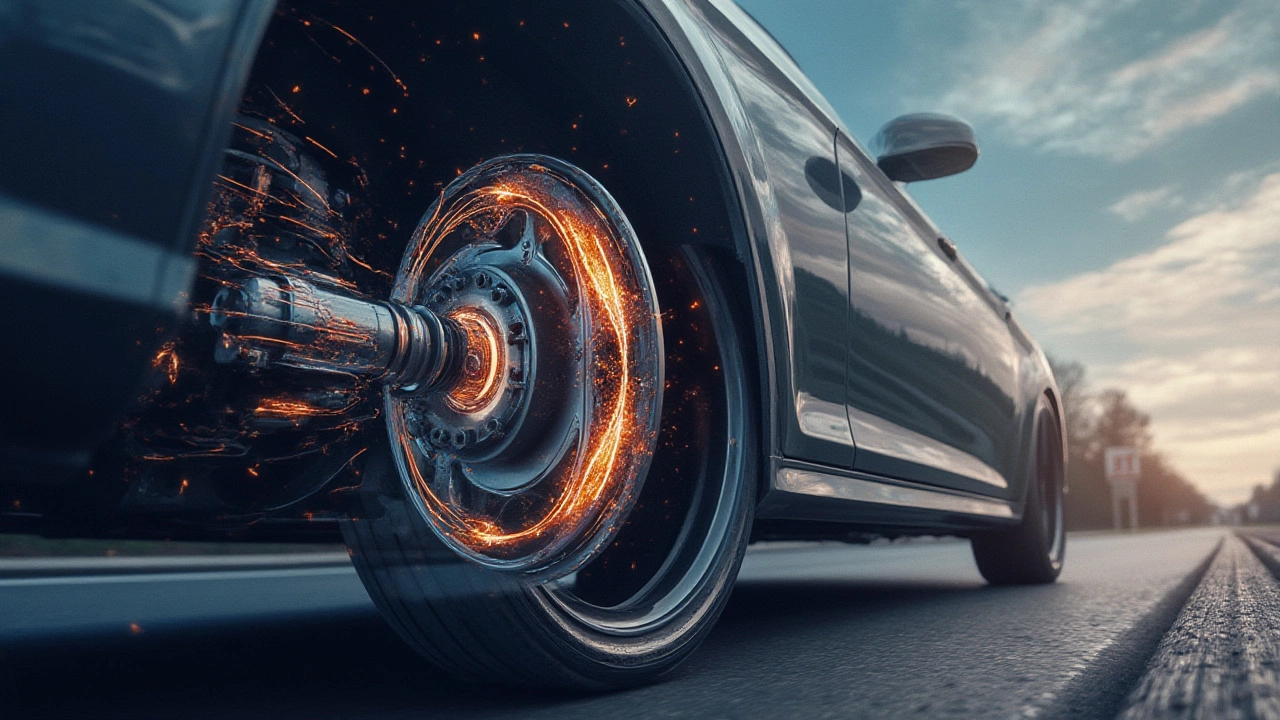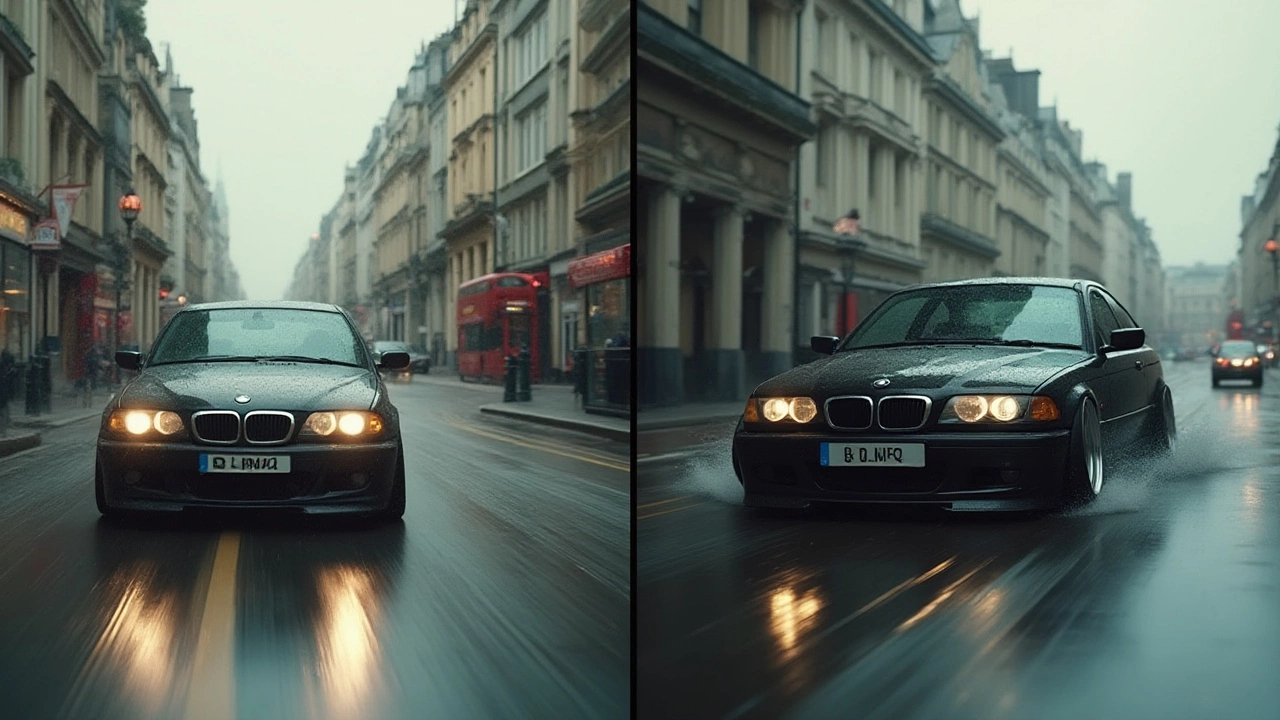Ever noticed a car sticking its wheels out a bit too far from the fenders? Looks tough, right? That look is often the work of wheel spacers. Car folks love spacers to push their wheels out for a better stance or to make updated wheels fit around suspension or brake components. But before you buy a set for your ride, there’s a whole other side to the story that might convince you to pause for a rethink.
Potential Handling and Safety Risks with Wheel Spacers
There’s a reason most automakers give wheel spacers the cold shoulder. Adding spacers shifts your wheels further away from the wheel hub. This doesn’t sound like much, but even a few millimeters can make a difference in how your car behaves. The main issue? You’re changing the scrub radius and leverage acting on your suspension. Instead of the load sitting directly over the hub’s center (where the car was engineered for it), it now juts outward. As a result, your steering can feel heavier, and the car might act a bit odd in corners—understeering one moment, tramlining the next.
That’s not just talk. The German safety inspection group TÜV says that even a 5mm spacer can affect steering geometry. With larger spacers, drivers often report a less precise steering response and a vague sensation of floatiness on the highway. In wet weather, hydroplaning can creep up faster since the tire track width increases and distributes weight differently.
Front-wheel-drive cars can be especially sensitive. The increased leverage on wheel bearings means more strain during every drive, every bump, and every hard turn. Over time, this stress can speed up wheel bearing and hub assembly wear. Some mechanics in Melbourne say they see twice the replacement rate in cars running thick spacers compared to stock. That’s not great for your repair bill.
Then there’s safety. If you get the wrong type—think cheap ebay specials—they might not fit flush to the hub or use the right materials. That leaves you at risk of wheel wobble or even fastener failure. Here’s a real stat: According to Australia’s Transport Accident Commission, poor quality aftermarket parts contributed to 12 percent of vehicle-related mechanical failures in 2024. No one wants to lose a wheel at 100km/h.
One more biggie: Some insurance companies in Australia and the UK have started refusing claims for vehicles involved in accidents where illegal spacers were found. It’s classed as a ‘non-disclosed modification.’ Coverage denied. Ouch.
"Aftermarket wheel modifications, including spacers, can have unpredictable effects on vehicle handling and safety that most drivers aren’t ready for. Manufacturers test thousands of hours for a reason." – Tony Webb, Lead Automotive Engineer, VicRoads
If you’re hell-bent on using spacers, go for true hub-centric versions made from quality alloys like 6061-T6 aluminum. And always torque down lugs to manufacturer specs with a proper wrench. That’s your best shot at staying safe, but you’ll still face more risks than someone running the wheels as intended by the car’s maker.

Impact on Wear and Maintenance Costs
You might think wheel spacers are a simple mod with no lasting effects. But the added distance between your wheel’s mounting surface and the hub does more than mess with looks and handling; it’s a shortcut to more frequent repairs for key parts. Here’s why: That extra leverage from the spacer doesn’t just act on your steering—it multiplies wear on suspension bushings, ball joints, and those all-important wheel bearings. Every pothole, every curb, and every fast corner gets amplified. Multiply that over years of Melbourne’s unpredictable roads, and it shows.
Some independent garages report that cars with 15mm+ spacers chew through wheel bearings twice as fast. A bearing that might last 150,000km could start groaning before it hits 75,000km. Here’s a comparison table:
| Part | Expected Lifespan (Stock) | With 15mm Wheel Spacers |
|---|---|---|
| Wheel Bearing | 120,000-150,000 km | 60,000-90,000 km |
| Ball Joint | 100,000-120,000 km | 60,000-80,000 km |
| Control Arm Bushing | 90,000-110,000 km | 50,000-80,000 km |
Shops agree: regular alignment checks are a must if you’re running spacers. Even the best brands tend to allow a hair more flex, meaning your alignment can drift more often. That means more money spent over time to keep everything pointing straight.
Tire wear? You bet, that changes too. The wider track worsens the camber curve in most suspension setups, so you’ll see more inner or outer tire wear—sometimes both. For low-pro tires (think performance or street cars), uneven wear sets in early. If you rotate your tires every 10,000km, you might need to drop that to 6,000km and still expect shorter tire life. At $200+ a pop, that stings.
Another odd one: brakes can heat up differently because the extra width slightly changes airflow and heat transfer during aggressive driving. Not a huge deal for casual city trips, but anyone who tracks or pushes their car might notice brake fade setting in a bit sooner. You’ll want to keep a close eye on pad and rotor condition if you’re spacing out the wheels and driving hard.
Now, if your car is under warranty, check the fine print. In Australia, most new car warranties get voided for suspension, bearing, and steering faults if spacers are found on the vehicle. Dealers aren’t generous here—they’ll spot a shiny aluminium spacer from a mile away and turn down your claim.
One small plus: if you buy a top-tier, hub-centric spacer kit and install it perfectly, you might not see these harsh consequences right away. But down the line—especially after a bumpy winter or two—most people notice the hit. Wheel spacers are the classic ‘looks cool now, pays later’ move.

Legal Considerations and Everyday Practical Issues
This is where it gets really interesting. Think wheel spacers are a tiny detail no one will notice? Not in Australia and plenty of other countries. Under local road rules, altering the vehicle’s track width past a certain limit is illegal. In Victoria, for example, the wheel track can’t be wider than 25mm beyond what’s listed on your compliance plate unless you get an engineering sign-off. That “cop-magnet” stance can land you a yellow defect sticker in seconds—or even force you off the road until you fix it.
There’s more: roadside checks in 2024 were ramped up, targeting modified vehicles. Data from VicRoads shows that out of 2,000 roadside inspections of cars with visible wheel mods, just under a third were issued warnings or fines due to unauthorized spacers or track width increases.
This isn’t just about fines. Cars running spacers that are too wide can rub the tires against wheel arches, especially over bumps or with extra passengers. You’ll get noise, vibrations, and in the worst cases, sliced tire sidewalls. Owners with lowered cars are especially at risk. Think about ruins at the Summernats—more than one story out there about a tyre giving way on the drive home because of wheel arch rub after the wrong spacer choice.
Let’s talk daily headaches. Some spacers push your wheels so far out that you’ll find yourself nicking curbs every time you parallel park. That’s not just a scratch on your rims—it can blow out a tire or bend suspension parts if you hit hard enough. Also, the added width can make tight parking spots challenging, especially in the close street parking common in Melbourne’s inner suburbs. Fitment issues stack up, too. Some aftermarket spacers don’t play nice with factory wheels—lugs might not seat perfectly, meaning dangerous looseness or wobble.
Insurance is another minefield. As mentioned earlier, skipping the fine print on your insurance application can spell disaster later on. In 2025, several major Aussie insurers updated their policies to say “all non-factory track width modifications must be declared.” Fail to disclose, and literally one crash can leave you with a write-off and zero payout. Some companies, like Shannons, will allow it if you declare and engineer-certify. Others, like Allianz, simply won’t touch cars with spacers—end of story.
In the end, wheel spacers aren’t a crime in themselves. They have a place in motorsport or classic car restoration, where fitment quirks and style points matter. But in daily driving, be prepared for heavy trade-offs. When someone on a car forum says “no issues, mate, I’ve run 20mm spacers for years”—there’s usually more to the story they’re not sharing. Whether it’s faster part wear, red tape, or ruined tires, the negatives can stack up fast if you don’t do your homework.




